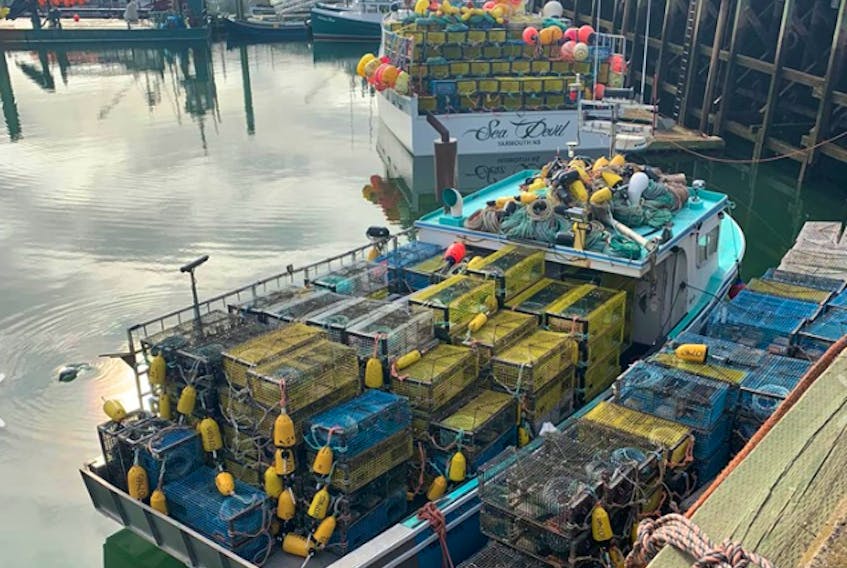DIGBY, N.S. — The first of the southwestern Nova Scotia commercial lobster fall fisheries is underway if all went according to plan weather wise.
Lobster Fishing Area (LFA) 35 opened at 12:01 a.m. on Oct. 14 with the 93 full time and four part-time licence holders in the district heading to the fishing grounds in the upper Bay of Fundy.
“When the season opens and the Digby fleet is coming through the gut,” looking from Delap’s Cove, “there’s a false sunset inside the Annapolis Basin,” said Colin Sproul, president of the Bay of Fundy Inshore Fishermen’s Association. “There’s 60 or 70 boats coming out of there with four or five crabs’ lights each. You can see it right over the north mountains. It’s unbelievable. It’s like a sunset coming out of the basin at midnight.”
Sproul said fishermen are hearing the opening price could be in the $8 to $9 range.

“Evidence is the quality is really high and the lobsters are a nice size,” he said. “There’s a lot of hope for a good season with talk of a big price adding to the excitement.”
Sproul said the higher shore prices are “entirely dependant on the Chinese entry into the buyers’ marketplace,” something that LFA 35 fishermen welcome. “It’s been proven to be good for the fishermen,” he said.
The LFA 35 spring fishery, which closed on July 31, was a “terrible spring season for pretty well everyone in the district,” said Sproul, estimating landings will probably be a 15-year historical low.
“A lot of the old guys say one rule you can always say is if you don’t catch them in the spring you will catch them in the fall. These lobsters are so highly migratory up here. They migrate in and out of district. If the migration doesn’t line up in the spring, we get them in the fall and the same if we don’t get them in the fall, we get them in the spring.”
Going into the season Sproul said LFA 35 fishermen have a number of concerns including a North Atlantic Right Whale that was spotted in the Bay of Fundy near Grand Manan in late September/early October.
“There are no special measures yet but it’s a concern,” he said.
“Another concern we have is there’s an area of interest (AOI) proposed for a marine protected area (MPA) right prime in the best lobster fishing areas of LFA 35.”
The Horse Mussel Reefs is one of 31 sites being proposed for inclusion in the MPA Network for the Scotian Shelf Bioregion, according to a draft map that has been made public.
Sproul, who sits on the Scotia Fundy Fisheries Roundtable MPA Network Working Group, said the whole AOI selection process “has been corrupt from the very start” and has “zero social licence because all the AOIs were picked without any input from the fishing industry or the coastal communities.
"The only people who had input was corporate Canada,” he said, evidenced by the fact that current and proposed tidal energy projects will have no impact from MPAs, there is no overlap between MPAs and oil and gas interests on the Scotian Shelf, and offshore fishing interests will lose zero per cent of their traditional fishing grounds.
“Fishermen with our ancestral knowledge and the Mi’kmaq people should have been the first ones that should have been consulted and they didn’t do it." he said. "The whole process is corrupted and is going to have zero conservation value because you are not protecting the right areas.”
LFA 35 stretches from Burns Point near Digby, to Cobequid Bay on the Nova Scotia side, and from Alma to Goose River on the New Brunswick side.
The largest of the lobster fisheries in Atlantic Canada – LFAs 33 and 35 – which include southwestern Nova Scotia and the south shore of the province get underway at the end of November and run to the end of May.









